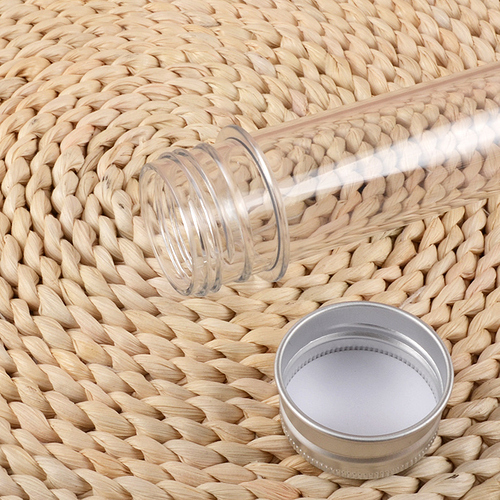any word on when the rest of us can get our hands on those needles? maybe i’m just looking in the wrong spots, but i can’t ever seem to find needles that big anywhere. not length-wise, anywhat
Ok to clear the air here, these needles are custom made and you can’t find them on Amazon or at regular piercing supply places. They are 4g (5mm) but the length is 80mm which is not available anywhere, which is why we had them made for us.
We supply them unsterilized for a few reasons, but the biggest one is that we intend to ship these needles to professional installers who have their own sterilization systems (autoclaves). Getting needles this large I to pouches and sterilized just results in punctured pouches and contaminated points.
Sorry to spread misinformation, I thought it was a normal 4g needle and didn’t do the research. I updated my comment.
No problem… we’ve not been good at putting out decent information about it yet anyway.
The problem with that approach is this:
-
A sizeable portion of your customers have to get in touch with a piercer who have never done an implant before and convince them to do it for them. They have trouble enough convincing the piercer without having to tell them “Oh and yes, you need to order this special needle and autoclave it to do this procedure you’ve never done on me, whom you’ve never met before” on top of it. That’s an extra hurdle they don’t need.
-
Another group of your customers have access to a piercer who’s knowledgeable about implants. Those piercers are unlikely to order the needle in advance, just in case the odd customer who wants to implant a Flex shows up.
-
A third group of customer already knows and trusts an “ordinary” piercer who’s not a partner, but who’s already done an implant for them. I’m in that category. My piercer is okay with doing a simple subdermal injection for me now, but he’s not too hot about doing anything more involved. But we trust each other and we’ve had a few brewskies together, so he might just agree to do a Flex for me if I show up at his shop with all the gear, and he has to decide whether he agrees to do it on the spot, right there and then, without thinking too much about it.
In all three cases, it would be far better if the would-be implantee could come with all the required hardware ready to go and say “Look, I have everything you need. You don’t need to do anything other than the procedure itself.”
Surely the needles don’t just come to you in a brown envelope ![]() Don’t they come in some sort of plastic tube - if only to protect the edge of the bevel? Couldn’t you order them already autoclaved, and the tube filled with CHG, and pass on the extra cost to those customers who want to order the needle in a sterilze packaging? Me, I’d gladly pay extra to be able to supply the tool to my piercer all ready to go.
Don’t they come in some sort of plastic tube - if only to protect the edge of the bevel? Couldn’t you order them already autoclaved, and the tube filled with CHG, and pass on the extra cost to those customers who want to order the needle in a sterilze packaging? Me, I’d gladly pay extra to be able to supply the tool to my piercer all ready to go.
To be honest, I have been trying to hold out to buy anything until the Apex.
I have been asking around, and I have people that can and are willing to help me, but I am not sure about how I would get it autoclaved. I have people knowledgeable in the medical practice, who practice medicine, that can stitch and stuff, just not autoclave.
My only alternative would be to soak it in chlorhexidine, let it dry, soak again and let dry.
I hear you guys… just some responses…
In reality piercers regularly do more complex procedures just to place jewelry, including pushing new studs through along with the needle and other more complicated gymnastics than this… but to compare the two implant procedures;
Injecting an x-series;
- lift the skin
- insert the needle almost completely
- retract the needle a bit (12mm)
- depress the plunger
- remove the needle
- bandage to close
Installing a flex;
- lift the skin
- insert the needle to the depth marker
- remove the needle
- insert the flex
- bandage to close
It’s literally less steps to install a Flex.
This is true… however… keep reading…
No, they literally come in a giant bundle from the factory with the points sticking into foam and a giant rubber band around the bulk of them.
Getting them made in the first place in “such a low” qty of 10,000 was very very difficult and took a lot of convincing. Needles are just one of those things nobody orders “just a few of” where “a few” was like literally 10k pcs… and everything you add to the process means higher MOQs… and sterilized stuff has an expiration because of infiltration through the pouch medium over time… and there is no way in hell I would ever sell 100,000 flex implants within the 5 year span those needles would be good for.
However, every piercer has an autoclave… every. single. one. … so it should be no big deal to make arrangements BEFORE you go in to have it installed. Get the piercer to call us even so we can discuss the needle and procedure. We are happy to dicsuss things with professionals, and will supply them the needle well in advance of the appointment.
I don’t have an autoclave in my lab, but I have never had any issues walking into a shop and talking to the owner and asking if I could pay them $5 or $10 to pouch and process a needle or whatever… never had any issues with that at all, and you shouldn’t either…
The problem here is that if we supply an unsterilized needle directly to the customer, we are guaranteed to see a spike in infections from people who figure “i’ll douse it with some vodka and jam it inside of me”… and we just don’t want to see that at all.
The other issue with this is the point of the needle banging around in a tube will get dull and possibly poke through the tube end… we are shipping them with a little hand made foam cozy on the end… but in all honesty… professionals do and will much prefer an actually sterilized needle from their own autoclave than one from a tube of CHG… we are constantly dealing with kickback from professionals asking about the way the Flex itself is shipped… not to mention finding a tube large enough for this needle that ALSO has a threaded cap AND an o-ring to keep CHG inside during transit in unpressurized air cargo holds… it’s kind of a challenge.
Speaking of challenges… time to crowdsource!! If anyone can find plastic tube with the following specifications, I will consider shipping needles in CHG to customers;
- 18mm maximum diameter
- 85+mm long
- threaded caps
- o-ring in the cap
Great clarification. Thanks @amal.
It would be a long flat incision, just firm pressure for a good 15 minutes, and you should be good. Think like the gauze wraps after a blood draw.
I used to pull sheaths out of people that were like 7-9 french, sometimes bigger or smaller, (about wooden pencil size) out of peoples necks and groins. Just pressure till the bleeding stopped. If it was an artery, a lil longer.
If it’s an artery, I’m going to bloody A&E ![]()
Ha! I know you joke, but just pull the needle out, put pressure on it and go to the doc. If you severed it, it will have to repaired. In case no one figured that.
I only dealt with medically inserted devices, like a swan-ganz catheter and others.
Yep this is exactly right. In the instructions (PDF floating around her somewhere) it states "achieve complete hemostatis (stop the bleeding), apply butterfly bandage, and then maybe a tegaderm or film bandage overtop. The reason for the butterfly bandage and film overtop is to stabilize the wound so it doesn’t break open and start bleeding again or have “other issues”, and unlike people in hospital who don’t move or do much after you yank a giant thing out of them, “normal” people generally get implants and go right out and bang around their limbs and generally cause problems for fresh wounds… so… for these bandages to be effective, it MUST not bleed again… or they will come right off and be useless… that’s why we try to stabilize as best we can and it’s important that the freshly upgraded hooman not crash their appendages into things for a few days after the installation.
As @amal states above, I did not need to stitch the wound, but since I could i figured why not ![]()
![]()
Congratulations! You’ve done a solid job doing this yourself.
Not an easy feat by any measure
Not sure if these would do the trick for a tube to send them in, but seem to check all the boxes except being glass instead of plastic.
Hopefully someone here works in a lab and might know something that fits your requirements better than my loose googling.
So I grabbed a couple of these for another project, about 1.5 years ago, they meet all the parameters Other than the “O”-ring, but that MAYBE an easy fix?!
Specification:
Material:PET Food Grade material
Color:Translucent
Capacity: 40ml(g)
Size:
14cm long
2.5cm diameter
I think I have a couple spare, I’ll grab them tomorrow and send them to you if you think they may be viable
https://www.aliexpress.com/item/32782936244.html?spm=a2g0s.9042311.0.0.27424c4dimyJLq
Here is a picture of the Lid and Thread
Rather than O rings, what about rubber Bungs… anyway I will keep searching in the interim
I used these at work today, and I think it is what you want.
https://www.labco.co.uk/products/breath-vials
They are a screw top with a rubber stopper in it. They hold breath in them, and the top can be pierced to inject or withdraw air.
You could even throw parafilm around it to help make sure the lid doesn’t turn, or heatshrink.
We don’t and we mail them across the country for research.
Nice find @Backpackingvet,
way better option than mine ![]()

